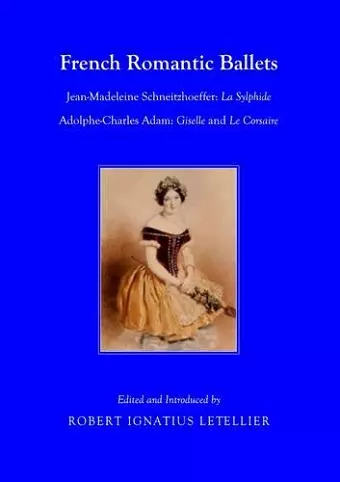French Romantic Ballets
Jean-Madeleine Schneitzhoeffer, La Sylphide Adolphe-Charles Adam, Giselle and Le Corsaire
Robert Ignatius Letellier editor
Format:Paperback
Publisher:Cambridge Scholars Publishing
Published:6th Dec '12
Should be back in stock very soon

This collection presents music from three of the most important scores of the Golden Age of ballet in Paris from 1830–1870. The Romantic ballet had been inaugurated by Meyerbeer’s opera Robert le Diable (21 November 1831) with its ghostly Ballet of the Nuns, risen from their graves and dancing in the moonlight, led by their spectral Abbess; a role created by Marie Taglioni (1804–1884) to her father’s choreography. La Sylphide (1832), inspired by this situation, was the first fully fledged Romantic ballet. Its graceful and atmospheric score was written by the first violinist at the Opéra, Jean Schneitzhoeffer. The story, devised by the great tenor Adolphe Nourrit, similarly introduces spirits and elemental beings, which dominated ballet scenarios for the following decades. Filippo Taglioni’s creation provided the fullest realization of the Romantic ideal, especially in the leading character of the story, and its perfect incarnation in the original interpreter, Marie Taglioni, whose stage personality seemed to be made for the part of the Sylphide. The ballet became the source of theatrically romantic fantasies centred around the hopeless and fatal love between a human being and a supernatural creature. It was performed in Paris until 1860, when the work was abandoned. Only in the late 20th century was Taglioni’s original version revived in a literal reconstruction by Pierre Lacotte at the Paris Opéra on 7 June 1972.Giselle is a central work in the ballet repertory all over the world. It is regarded as the absolute masterpiece of Romantic dance theatre; a wonderful synthesis of style, technique, and dramatic feeling, with an exceptional score. The ballet was devised in 1841 as a result of the collaboration of some of the major talents in literature, choreography and music in the Paris of the time. The author, critic and poet Théophile Gautier, overwhelmed by the art of the ballerina Carlotta Grisi (1819–1899), discovered what he felt would be the perfect theme for her while reading a translation of Heinrich Heine’s book on German legend and folklore, D’Allemagne. Here he found the legend of the wilis—maidens who die before their wedding day and who come out of their graves at night in bridal dress to dance until dawn. Should any man be caught in the wood while the wilis are about...
ISBN: 9781443837972
Dimensions: unknown
Weight: unknown
240 pages